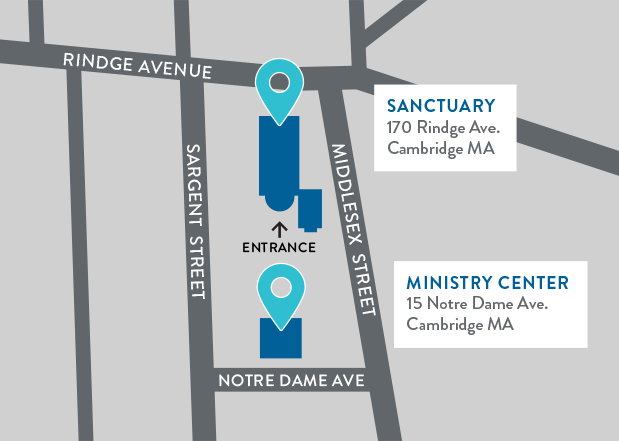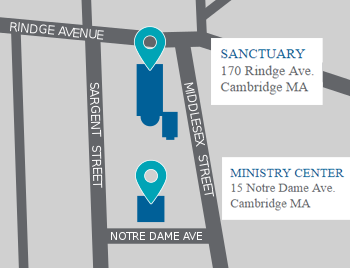Friday, April 19
On our final day of Bible reading in Lent, we’ll read the whole of Mark 15, a long passage, but I will keep my comments at the end brief. I encourage you to read slowly, imagining yourself present as a witness, even if the material is very familiar.
Mark 15 (CEB)
At daybreak, the chief priests—with the elders, legal experts, and the whole Sanhedrin—formed a plan. They bound Jesus, led him away, and turned him over to Pilate. 2 Pilate questioned him, “Are you the king of the Jews?”
Jesus replied, “That’s what you say.” 3 The chief priests were accusing him of many things.
4 Pilate asked him again, “Aren’t you going to answer? What about all these accusations?” 5 But Jesus gave no more answers, so that Pilate marveled.
6 During the festival, Pilate released one prisoner to them, whomever they requested. 7 A man named Barabbas was locked up with the rebels who had committed murder during an uprising. 8 The crowd pushed forward and asked Pilate to release someone, as he regularly did. 9 Pilate answered them, “Do you want me to release to you the king of the Jews?” 10 He knew that the chief priests had handed him over because of jealousy. 11 But the chief priests stirred up the crowd to have him release Barabbas to them instead. 12 Pilate replied, “Then what do you want me to do with the one you call king of the Jews?”
13 They shouted back, “Crucify him!”
14 Pilate said to them, “Why? What wrong has he done?”
They shouted even louder, “Crucify him!”
15 Pilate wanted to satisfy the crowd, so he released Barabbas to them. He had Jesus whipped, then handed him over to be crucified.
16 The soldiers led Jesus away into the courtyard of the palace known as the governor’s headquarters,[a] and they called together the whole company of soldiers.[b] 17 They dressed him up in a purple robe and twisted together a crown of thorns and put it on him. 18 They saluted him, “Hey! King of the Jews!” 19 Again and again, they struck his head with a stick. They spit on him and knelt before him to honor him. 20 When they finished mocking him, they stripped him of the purple robe and put his own clothes back on him. Then they led him out to crucify him.
21 Simon, a man from Cyrene, Alexander and Rufus’ father, was coming in from the countryside. They forced him to carry his cross.
22 They brought Jesus to the place called Golgotha, which means Skull Place.23 They tried to give him wine mixed with myrrh, but he didn’t take it. 24 They crucified him. They divided up his clothes, drawing lots for them to determine who would take what. 25 It was nine in the morning when they crucified him. 26 The notice of the formal charge against him was written, “The king of the Jews.”27 They crucified two outlaws with him, one on his right and one on his left.
29 People walking by insulted him, shaking their heads and saying, “Ha! So you were going to destroy the temple and rebuild it in three days, were you? 30 Save yourself and come down from that cross!”
31 In the same way, the chief priests were making fun of him among themselves, together with the legal experts. “He saved others,” they said, “but he can’t save himself. 32 Let the Christ, the king of Israel, come down from the cross. Then we’ll see and believe.” Even those who had been crucified with Jesus insulted him.
33 From noon until three in the afternoon the whole earth was dark. 34 At three, Jesus cried out with a loud shout, “Eloi, eloi, lama sabachthani,” which means, “My God, my God, why have you left me?”
35 After hearing him, some standing there said, “Look! He’s calling Elijah!”36 Someone ran, filled a sponge with sour wine, and put it on a pole. He offered it to Jesus to drink, saying, “Let’s see if Elijah will come to take him down.” 37 But Jesus let out a loud cry and died.
38 The curtain of the sanctuary was torn in two from top to bottom. 39 When the centurion, who stood facing Jesus, saw how he died, he said, “This man was certainly God’s Son.”
40 Some women were watching from a distance, including Mary Magdalene and Mary the mother of James (the younger one) and Joses, and Salome. 41 When Jesus was in Galilee, these women had followed and supported him, along with many other women who had come to Jerusalem with him.
42 Since it was late in the afternoon on Preparation Day, just before the Sabbath,43 Joseph from Arimathea dared to approach Pilate and ask for Jesus’ body. (Joseph was a prominent council member who also eagerly anticipated the coming of God’s kingdom.) 44 Pilate wondered if Jesus was already dead. He called the centurion and asked him whether Jesus had already died. 45 When he learned from the centurion that Jesus was dead, Pilate gave the dead body to Joseph. 46 He bought a linen cloth, took Jesus down from the cross, wrapped him in the cloth, and laid him in a tomb that had been carved out of rock. He rolled a stone against the entrance to the tomb. 47 Mary Magdalene and Mary the mother of Joses saw where he was buried.
Points of Interest
- I’m going to restrain myself to two comments today. The first is on anti-Semitic readings of this passage. I’ve met Jews that as late as the 1970s or 80s, were told as children that “their people killed Jesus.” So let’s get something straight: there are only a few non-Jewish characters. Pilate, who sentenced Jesus to death, and the Roman soldiers who killed Jesus were emphatically not Jewish. The army captain who praises Jesus is also not Jewish. Simon, who helps Jesus carry the beam to which he is then nailed, may or may not have been Jewish. (He was African, and some African-American writers and preachers have seen Black lynching victims in particular and the unjust sufferings of Black Americans generally as known and understood by both Simon and Jesus here.) On the other hand, the good man who buries Jesus, the women who are faithful to the end, Jesus himself, Barrabas – the enemy of the state who is freed, and many of the crowds that mock and curse Jesus are all Jewish. There are no cultural or religious heroes or villains in the crucifixion.
- Who is crucified is God’s son. The Roman centurion, an army captain there to supervise crowd control and supervise the execution itself, proclaims this after seeing Jesus’ brave, and relatively quick, surrender to death. Crucifixion victims die of slow asphyxiation, literally hanging on for dear life for many, many hours. Jesus experiences great hope and despair. The words he cries are the first verse of Psalm 22, a lament of a victim of unjust suffering, but also a song of confident hope that God is in fact still with the victim, working for redemption. After this, Jesus rejects a homemade painkiller and surrenders to death.
Surely the Roman army captain means to call Jesus a great man, an extraordinary model of a human life – a son of the gods. And yet for Mark, his praise echoes his very first verse, in which the author titles his work: The Good News of Jesus, God’s Son.
In Jesus’ whole of his teaching and healing ministry, he has shown himself to be the very picture of a great human life (The Human One), which is to be full of the love and power and wisdom of God. Now in Jesus’ courage and hope, he shows that he shares the nature of God. In Jesus’ identification with and experience of great human suffering, he fulfills God’s mission to bring the great life of God into contact with all the death of humanity. Thanks be to God.
A Direction for Prayer
Pray for friends and family that in any way will mark Good Friday or Easter this weekend, that their minds and hearts would welcome the good news of God with us.
Spiritual Exercise of the Week
Toward Courage over Fear – If you’re up for it today, consider for a moment a great fear of yours – a failure, a loss, or trouble you might face, perhaps even your own death. Ask Jesus to assure you that Jesus will be with you should you face this fear. Ask Jesus: how will you be with me in compassion and strength? After a few moments of imaginative prayer, welcoming Jesus’ presence with you, close by praying this short excerpt from the ancient prayer, The Breastplate of Saint Patrick:
I arise today
Through the strength of Christ’s birth with his baptism,
Through the strength of Christ’s healing with his laughter,
Through the strength of Christ’s teaching with his feasting,
Through the strength of Christ’s crucifixion with his burial,
Through the strength of Christ’s resurrection with his ascension,
Through the strength of Christ’s descent for the judgment of doom.


 Each day, you’ll hear an excerpt from Revelation, followed by observations, comments and suggestions for prayer and response. The Daily Bible Guide is part of 40 Days of Faith at Reservoir Church — our take on Lent. Each year during Lent, we make space to intentionally read scripture in community.
Each day, you’ll hear an excerpt from Revelation, followed by observations, comments and suggestions for prayer and response. The Daily Bible Guide is part of 40 Days of Faith at Reservoir Church — our take on Lent. Each year during Lent, we make space to intentionally read scripture in community.








